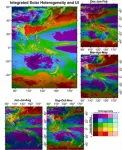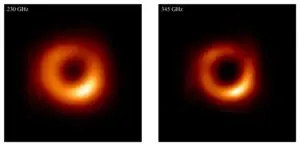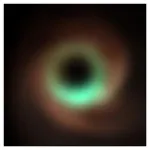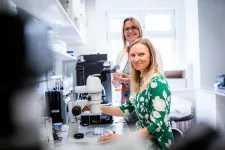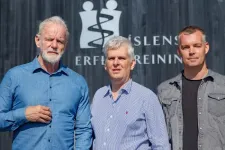(Press-News.org)
Amidst the ongoing energy crisis and under the threat of climate change, exploiting renewable energy sources has quickly become a global necessity. Though our options are varied, solar energy seems to be our best bet—experts estimate that it may become our main energy source well before the turn of the century.
Despite its clear advantages, solar energy generation has some limitations. Much like the wind, solar irradiance in a given region can vary quickly depending on weather conditions, causing fluctuations in power output. These fluctuations not only pose a problem for power grids but also imply that meeting energy demands may not always be a guarantee. Thus, having a clear understanding of the possible variations in solar irradiance in time and space is crucial to determining the optimal locations for solar power plants.
Against this backdrop, a research team led by Specially Appointed Assistant Professor Hideaki Takenaka from the Center for Environmental Remote Sensing, Chiba University, set out to extend our knowledge of solar irradiance over the Asia Pacific region. In their latest study, made available online on June 13, 2024, and published in Volume 276 of Solar Energy in July 2024, they conducted an in-depth analysis of solar irradiance data gathered from geostationary satellites. Other team members included Kalingga Titon Nur Ihsan, Graduate School of Science and Engineering, and Atsushi Higuchi, Center for Environmental Remote Sensing, both from Chiba University, as well as Anjar Dimara Sakti and Ketut Wikantika from the Center for Remote Sensing at Institut Teknologi Bandung.
The data for the analysis came from Himawari-8 and Himawari-9, two Japanese satellites that collect images with high temporal and spatial resolution over the Asia Pacific region. The researchers used AMATERASS solar radiation data obtained from quasi-real time analysis of solar radiation synchronized with geostationary satellite observation. They were developed by Dr. Takenaka and colleagues to accurately estimate solar irradiance via high-speed radiative transfer calculations using neural networks. AMATERASS operation started in July 2007, and analysis data was archived continuously for over 16 years. This data was made publicly available by the Chiba University, CEReS DAAC (Distributed Active Archive Center), downloaded 186,465,724 times, and used in various research and Japanese national projects. By leveraging this technology, the team estimated solar irradiance variability in terms of spatial and temporal heterogeneity. Simply put, they calculated how drastically solar radiation varies in space and time by analyzing solar irradiance data over a 20 km by 20 km grid every ten minutes.
Their analysis revealed interesting facts about solar irradiance over the region. For example, the team found that locations near the equator experienced lower fluctuations in solar irradiance over time compared to higher latitude regions due to the effects of rain and cloud activity. Moreover, regions of higher elevation exhibited higher heterogeneity due to higher cloud activity. The area around the Tibetan Plateau showed high seasonal changes in the magnitude of the ‘umbrella effect,’ which quantifies how much solar energy is reflected back to space. “Our evaluations based on spatiotemporal data revealed characteristics that would’ve been impossible to achieve using a traditional approach that relies on simple long-term averages or TMY (Typical Meteorological Year) as a typical solar irradiance data,” highlights Dr. Takenaka.
In addition to these insights, the research team assessed the performance of over 1,900 existing solar power plants using annual and seasonal data. They found that, due to umbrella effects caused by clouds, the production of a large portion of these plants is not optimum from June to August. This implies that the most affected zones should not rely entirely on solar power to meet increased demands during these months.
Finally, the researchers also investigated the optimal format for future solar power plants, concluding that more widely distributed solar energy generation is superior to more localized efforts. “Based on the spatial and temporal characteristics of solar irradiance, we suggest that it should be possible to suppress rapid fluctuations in solar power generation output by distributing small photovoltaic systems over a wide area rather than relying on large solar power plants,” explains Dr. Takenaka. “Worth noting, these conclusions come from weather and climate research, not an engineering perspective.” One way to achieve this vision might be through the use of rooftop solar panels, which is a growing trend in many countries.
Overall, the findings of this study will help us plan for the short- and long-term future of solar energy generation in the Asia Pacific region, bolstering sustainable energy technologies and aiding in our fight against climate change.
About Specially Appointed Assistant Professor Hideaki Takenaka
Hideaki Takenaka obtained a Ph.D. degree from Chiba University in 2009. He currently holds a special research and teaching position at the Center for Environmental Remote Sensing at Chiba University. His work focuses on solar energy, satellite remote sensing, solar radiation monitoring, and weather and climate science. He has published over 40 papers on these topics.
END
Sophia Antipolis, France – 27 August 2024: Cardiovascular disease (CVD) remains the most common cause of death across Europe but while CVD mortality rates are generally decreasing, the decline is much less in middle-income than in high-income countries, according to new data from the European Society of Cardiology (ESC) Atlas of Cardiology, published in the European Heart Journal.1
The fourth edition of ESC Atlas statistics again demonstrate that CVD is the most common cause of death in the 55 ESC member countries studied. There are over 3 million deaths due to CVD per year – the equivalent of 8,500 deaths per day – which represents 37.4% of all deaths annually. ...
Researchers from the Institute of Organic Chemistry and Biochemistry of the Czech Academy of Sciences, in cooperation with colleagues from the Faculty of Tropical AgriScience of the Czech University of Life Sciences in Prague, are unravelling the mysteries of the life of termites. Colonies of the species Neocapritermes taracua boast a unique type of defence, which is provided by worker termites at the end of their lives. When attacked, they sacrifice themselves by setting off an explosive chemical reaction, the ...
PULLMAN, Wash. – While meant to simulate wood bats, regulation USA Baseball metal bats are more forgiving than wood for young players who might not connect with the ball on a bat’s optimal “sweet spot.”
After testing wood bats and two types of metal bats with youth players, Washington State University researchers found that the exit speed of a hit ball was as much as 5% faster with metal bats over wood. Analyzing the data, they found that the performance of the USA Baseball metal bats at the sweet spot was similar to wood. It was when the hits were on less optimal areas that there was a bigger difference.
“There’s ...
Researchers at the Centre for Genomic Regulation (CRG), the University of the Basque Country (UPV/EHU), Donostia International Physics Center (DIPC) and the Fundación Biofisica Bizkaia (FBB, located in Biofisika Institute) have developed an artificial intelligence which can differentiate cancer cells from normal cells, as well as detect the very early stages of viral infection inside cells. The findings, published today in a study in the journal Nature Machine Intelligence, pave the way for improved diagnostic techniques and new monitoring strategies for disease.
The tool, AINU (AI of the NUcleus), scans high-resolution images of cells. The ...
London, United Kingdom – 27 August 2024: Clinical follow-up using virtual voice technology helped identify complications after transcatheter aortic valve implantation (TAVI) with a high degree of patient satisfaction, according to research presented at ESC Congress 2024.1
Explaining the rationale for the development of the virtual voice assistant for TAVI patients, study author Dr. Marta Herrero Brocal from the Dr. Balmis General University Hospital of Alicante, Spain said: “Aortic valve stenosis is common, especially in the ageing population.2 It can be treated with surgery ...
London, United Kingdom – 27 August 2024: Research from two studies in different European cities1,2 highlights that urban noise pollution has a significant negative impact on heart health, according to data presented at ESC Congress 2024.
“The DECIBEL-MI study shows that young patients aged 50 years or less who had a myocardial infarction (MI) had been exposed to higher levels of noise than the general population. The study demonstrates that urban noise could significantly increase the risk of early-onset MI in young people with low traditional risk factors. Including ...
Scientists at deCODE genetics and collaborators, have identified a sequence variant in the CCDC201 gene that when inherited from both parents homozygous causes menopause on average nine years earlier.
deCODE genetics, a subsidiary of Amgen, and collaborators from Iceland, Denmark, the UK, and Norway published a study in Nature Genetics today revealing a rare genotype with a significant impact on women's health.
Age at menopause significantly affects fertility and disease risk. This research focused on ...
London, United Kingdom – 27 Aug 2024: New research presented at the ESC Congress 2024 in London, UK (30 August – 2 September) shows that women in the menopause transition period show changes in their blood cholesterol profiles which could have an adverse impact on their cardiovascular health.
“There is an increase in ‘bad’ low-density type lipoprotein (LDL) particles and a decrease in ‘good’ high-density lipoprotein particles (HDL) that takes place during and after the menopause transition,” says study author Dr Stephanie Moreno, University of Texas Southwestern Medical Center, Dallas, TX, USA. “Taken ...
Millions of women who work in the fisheries industry are being left behind as technologies develop to counter the effects of climate change and economic pressures.
New research led by the University of East Anglia (UEA) looks specifically at post-harvest fisheries and aquaculture, where women constitute 50 per cent of the total workforce. Despite their significant contributions women often remain invisible, are unpaid or underpaid, their work seen as an extension of household work.
The findings, ‘A systematic review of the impact of post-harvest aquatic food ...
The James Webb Space Telescope has spotted six likely rogue worlds—objects with planetlike masses but untethered from any star’s gravity—including the lightest ever identified with a dusty disk around it.
The elusive objects offer new evidence that the same cosmic processes that give birth to stars may also play a common role in making objects only slightly bigger than Jupiter.
“We are probing the very limits of the star forming process,” said lead author Adam Langeveld, an astrophysicist at Johns Hopkins University. “If you have an object that looks like a young Jupiter, is it possible that ...
